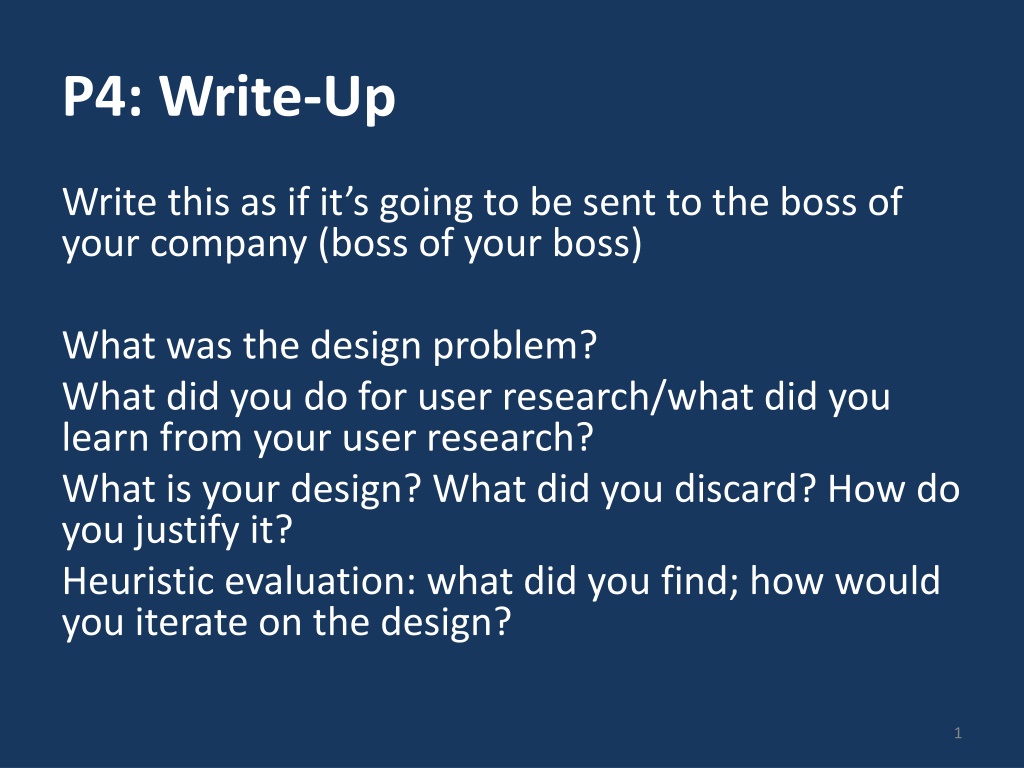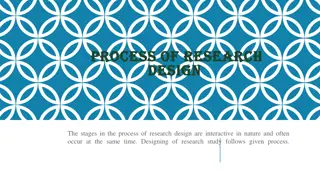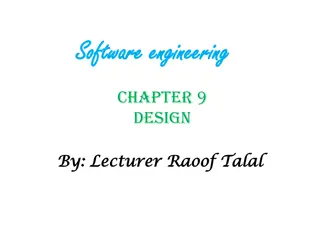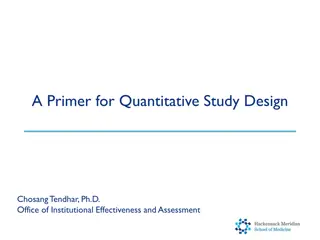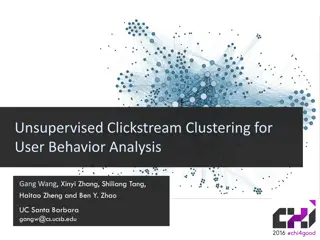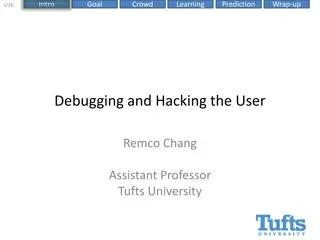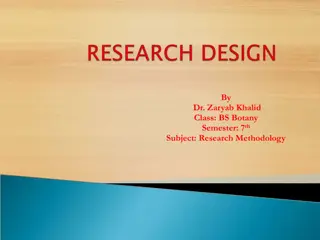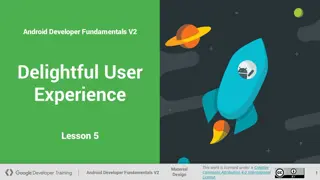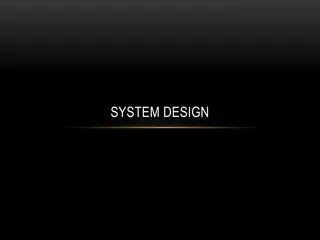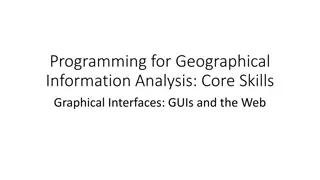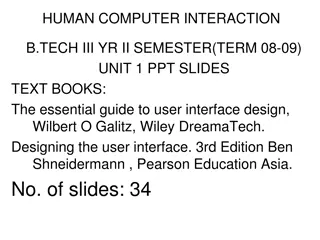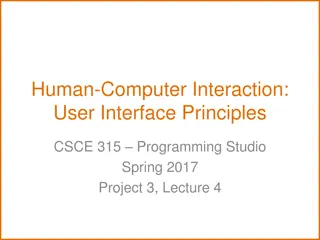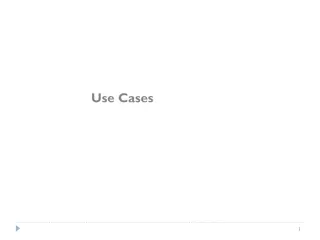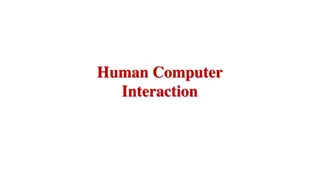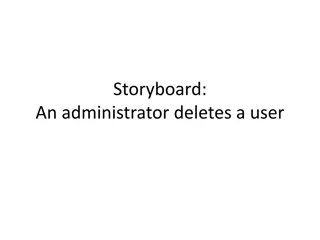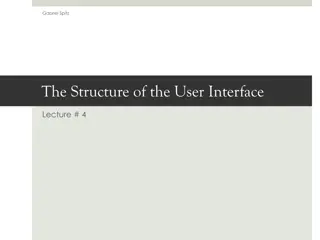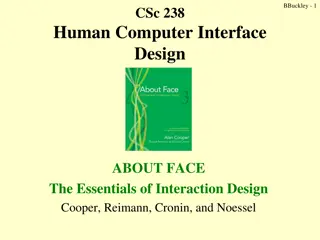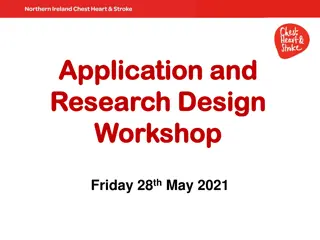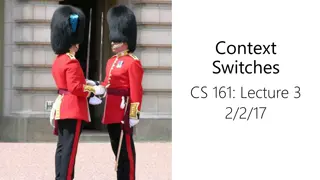Design Problem and User Research Insights
Conducted user research to address the design problem, identified key insights, and developed a refined design approach. Discarded less effective elements through heuristic evaluation and proposed iterative improvements for the design.
Uploaded on Feb 28, 2025 | 0 Views
Download Presentation

Please find below an Image/Link to download the presentation.
The content on the website is provided AS IS for your information and personal use only. It may not be sold, licensed, or shared on other websites without obtaining consent from the author.If you encounter any issues during the download, it is possible that the publisher has removed the file from their server.
You are allowed to download the files provided on this website for personal or commercial use, subject to the condition that they are used lawfully. All files are the property of their respective owners.
The content on the website is provided AS IS for your information and personal use only. It may not be sold, licensed, or shared on other websites without obtaining consent from the author.
E N D
Presentation Transcript
P4: Write-Up Write this as if it s going to be sent to the boss of your company (boss of your boss) What was the design problem? What did you do for user research/what did you learn from your user research? What is your design? What did you discard? How do you justify it? Heuristic evaluation: what did you find; how would you iterate on the design? 1
P4: Presentation Give this as if it s going to be sent to the boss of your company (boss of your boss) What was the design problem? What did you do for user research/what did you learn from your user research? What is your design? What did you discard? How do you justify it? Heuristic evaluation: what did you find; how would you iterate on the design? 2
P4: Presentation Presentations in tutorial (10 mins + 5 mins Q) Give it a go in PowerPoint Suggestion: practice No need to demo (we saw that last week); give a quick tour of some highlights (say as screenshots) 3
Direct Manipulation CPSC 481: HCI I Winter 2014 Anthony Tang, acknowledgements to Saul Greenberg 4
Learning Objectives By the end of this lecture, you should be able to: Describe the benefits and drawbacks of direct manipulation Define "engagement" and "distance" in the context of direct manipulation Distinguish between gulf of execution and gulf of evaluation Define both semantic and articulatory distance 5
Outline Direct manipulation What does direct mean? engagement distance semantic and articulatory distances 6
EdgeMaps 7
Example: Copy command (DOS) Copies files from one location to another. The destination defaults to the current directory. > copy file1 [destination] If multiple files are to be copied, the destination must be a directory, or an error will result. > copy file1 file2 file3 [destination] Files may be copied to devices. To send file to printer: > copy file lpt1 To display file on screen ("console"): (alternatively: type file) > copy file con > No feedback given after one of these commands; just a prompt > Equivalent Unix command: cp
SQL Queries Which companies sell everything that WalMart sells? (List companies such that there does not exist an item sold by Walmart that they do not sell.) select distinct X.name from suppliers X where 0 = (select count (*) from suppliers Y where Y.name = WalMart and 0 = (select count (*) from suppliers Z where Z.name = X.name and Z.item = Y.item)) 9
Compare and Contrast Interaction Styles EdgeMaps Command Line 10
Direct Manipulation in terms of GUI mechanics 1. Continuous representation of the object of interest 2. Physical actions or labeled button presses instead of complex syntax copying a file: cp foo.txt /home/tonyt vs. dragging file icon to my home folder 3. Rapid incremental reversible operations whose impact on the object of interest is immediately visible think about EdgeMaps 4. Output representation can be operated on as input 11
Direct Manipulation: benefits 1. Novices can learn quickly, e.g. through demonstration 2. Error messages are rarely needed actions are constrained by the interaction syntax 3. Users can see immediately if actions are furthering goals, and if not, they can change the direction of their activity 12
Direct Manipulation: weaknesses 1. Ill-suited for abstract operations 2. Tedious manually searching a database vs. query or some other repeated operation 3. Inability to deal with variables / semantic symbols 14
Directness more abstractly DIRECTNESS = ENGAGEMENT + minimal DISTANCE Engagement: feeling of power/control Distance: effort to communicate/execute one s goals, and to evaluate system state 15
Engagement 16
Engagement 17
Engagement Another way to think about this is in terms of locus of control. In terms of the outcome: Do I feel like I am in control? Do I feel like the system is in control? 18
Black Ops 2 19
Distance and the Gulfs Gulf of execution: ability to express my desires/intentions to the system Gulf of evaluation: ability to understand what system is communicating to me 20
Zork 21
Kings Quest 22
Distance: communication Semantic distance is it possible to say what I want to say? can it be said concisely? Articulatory distance how difficult is it to physically express these meanings? 23
Another way of viewing interaction Minimize gulf of execution Minimize gulf of evaluation 25
Learning Objectives You should now be able to: Describe the benefits and drawbacks of direct manipulation Define "engagement" and "distance" in the context of direct manipulation Distinguish between gulf of execution and gulf of evaluation Define both semantic and articulatory distance 26
